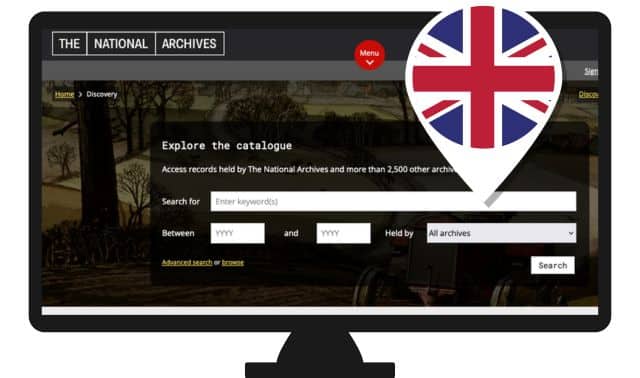Sign up for the Family Tree Newsletter Plus, you’ll receive our 10 Essential Genealogy Research Forms PDF as a special thank you!
Get Your Free Genealogy Forms
"*" indicates required fields

The year is 1837 and Queen Victoria is beginning her 63-year-reign. It’s also a pivotal year for genealogists with roots in England and Wales. Before then, your best sources of information are church records of baptisms, marriages and burials. But with the launch of civil registration in July 1837, the government started keeping records of births, marriages and deaths—what we call vital records. Church records were still kept after 1837, but civil registrations provide another source for documenting family relationships and key events in your ancestors’ lives.
Civil registration of another vital event—divorce—began in England and Wales in 1858. The British National Archives has a free online index to divorce records from 1858 to 1937. Scotland’s civil registration began in 1855, and you can access the indexes and records for a fee on ScotlandsPeople.
Online Birth, Marriage and Death Indexes
Before you start searching for these civil registrations, you’ll need to know a few things about online birth, marriage and death (BMD) indexes: When ordering a copy of a BMD record, it helps to have an index reference. Vital events were registered at local offices, which sent copies to the national office—the General Register Office (GRO).
Nationwide BMD indexes were created every three months, so there are four indexes for every year. Genealogists once relied on printed quarterly indexes (or microfiche copies), but using them was time-consuming without an approximate date. Now you can easily search English and Welsh BMD indexes online, covering multiple years in seconds.
These BMD indexes refer to a registration district, not to the town where the birth, marriage or death occurred. Here’s a sample entry from the index to deaths in England and Wales for the first quarter of 1868: “Morgan, William. Age 70. District: Hay. Volume 11b, page 110.” Hay, the registration district, covers several towns in central Wales and the neighboring area of England. William Morgan actually died at his farm home in Llanigon.
Searching BMD Indexes
When searching BMD indexes, use the registration district, not the town where the birth, marriage or death occurred. Registration district boundaries changed over the years. The Index of Places in England and Wales gives the registration districts for all parishes from 1837 to 1974. Registration Districts in England and Wales shows the registration districts in each county. Some registration districts cross county lines, and searching on a county may miss relevant matches listed in another county.
You can search English and Welsh BMD indexes on several sites, including the seven described here (a $ indicates a paid-access website). Starting in 1912, the GRO marriage indexes include the spouse’s surname. Using that information, Ancestry.com (starting in 1916), findmypast.com and The Genealogist guess at the spouse’s identity.
Ordering BMD Certificates
Birth, marriage and death certificates for events registered in England and Wales are available from the GRO. Order by mail, by phone or online. If you supply the index reference, the certificate will be sent within four working days. You can request a certificate without an index reference, as long as you supply enough information to identify the birth, marriage or death, and the record (if located) will be sent within 15 working days.
You can also order BMD certificates from local register offices. Their policies vary, and some don’t accept credit cards, but you might get even faster service.
Don’t bother to order a civil marriage certificate if you already have the church record—they supply the same information. FamilySearch has microfilmed many English and Welsh church marriage records from 1837 to 1900. Use the FamilySearch catalog to find the film, and you can borrow it through a FamilySearch Center for $7.50—about half of what you’d pay for a copy of the civil marriage certificate.
English and Welsh BMD certificates contain about the same genealogical data you’d find in their American equivalents, with one major difference: English and Welsh death certificates never give the parents’ names.
Still, when you compare the United States’ patchwork of vital records (mostly beginning in the early 1900s) to English and Welsh birth, marriage and death records commencing in 1837, we can only be envious. With nationwide indexes, easy online ordering and fast service, civil birth, marriage and death records are some of the best and most easily accessible sources for English and Welsh genealogy.
Start searching BMD indexes at these sites:
Ancestry.com $
Ancestry uses FreeBMD’s indexes from 1837 to 1915. To search a registration district, input it in the Keyword box.
Findmypast.com $
To search on a registration district, put it in the Optional Keywords box. Findmypast.com also has records of British subjects who were born, married or died at sea, overseas or in the armed forces.
FreeBMD
A voluntary transcription project still in progress, FreeBMD makes it easy to search births, marriages and deaths at once. It consolidates alternate forms of the same registration district name so you don’t need to do multiple searches to cover them all.
The Genealogist $
The Genealogist offers advanced search features. For entries from 1912 to 2005, you can jump from a marriage index entry to the couple’s potential children in the birth index, or from a birth to the child’s potential siblings in the birth index and potential parents in the marriage index. In the 1911 census, click on the number of years a couple was married to jump to their entry in the marriage index. Use the Master Search to cover a BMD index range of more than 20 years, and enter the registration district or partner’s name in the Keyword box to narrow results.
Genes Reunited $
You can narrow your search of the BMD indexes here by county, but not by registration district.
UKBMD
UKBMD has links to online transcriptions of UK birth, marriage and death indexes. They include the local BMD—the original indexes held by local register offices. They’re worth checking because clerks often made errors when copying these to create the GRO indexes.
World Vital Records $
You can search two sets of English and Welsh indexes that cover civil registrations. United Kingdom Births 1761-2006, Marriages 1796-2005 and Deaths 1796-2006 don’t allow searches by registration district. To see the volume and page number for an index entry, view an image of the index page. You can search by registration district in the files England & Wales Birth Records, 1911-1954, and Death Records, 1969-2007.
A version of this article appeared in the May/June 2013 issue of Family Tree Magazine.
ADVERTISEMENT




